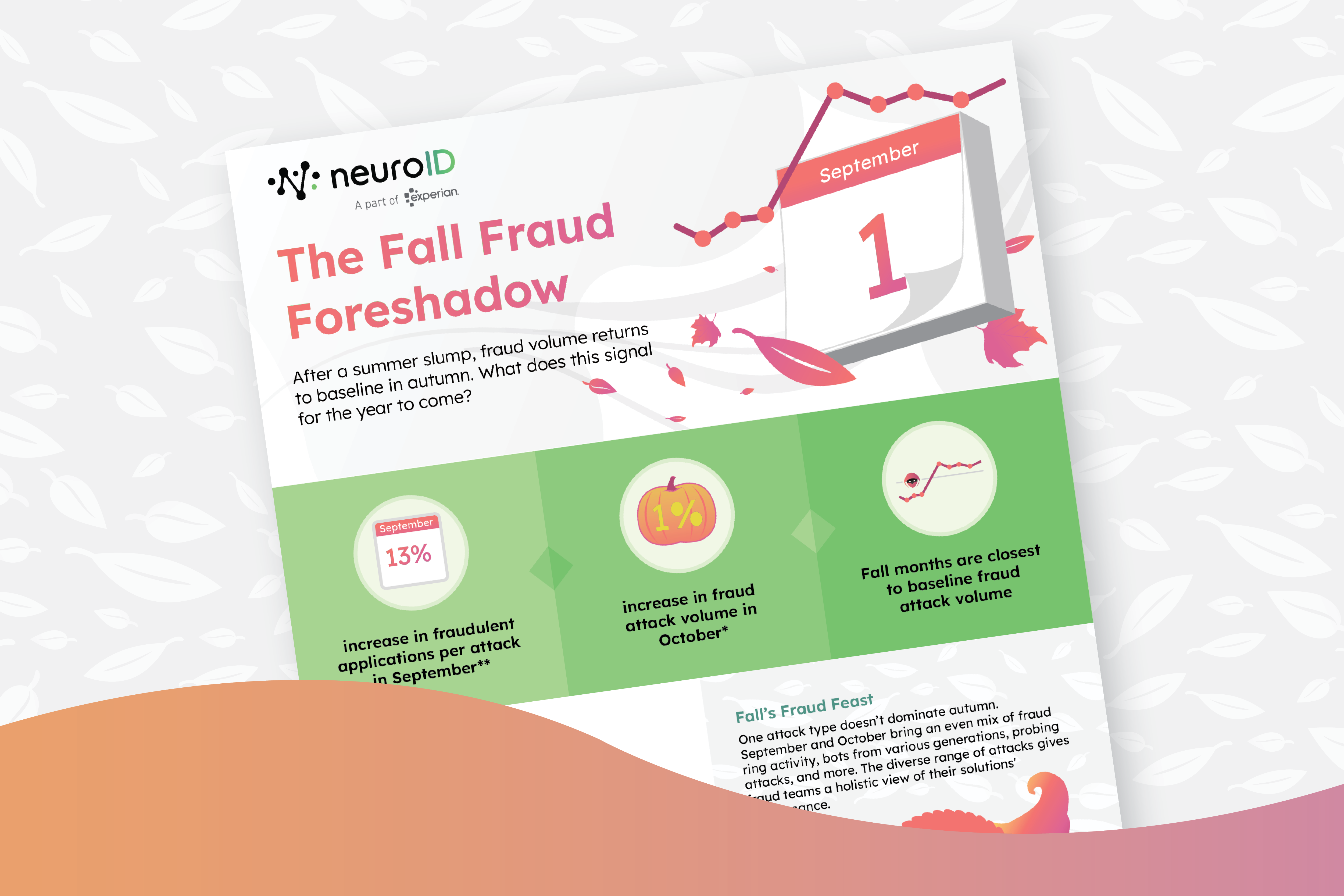
New Account Fraud Detection: Identify Genuine Customers
New account fraud is an ever-increasing concern for financial institutions and businesses that desire to grow their digital presence. Cybercriminals use various methods to commit fraud, ranging from stealing existing identities to constructing fake ones. Former hackers have even confirmed the existence of a digital “black market” where identities can be bought and sold.
The losses from new account fraud are staggering. According to a recent report by the Aite-Novarica Group, losses from identity theft rose to $712.4 billion in 2020, up 42% from $502.5 billion in 2019. The same group projects a similar rise to $721.3 billion by the end of this year.
Businesses often find themselves facing something of a catch-22: the same technologies used to keep criminals out can also reject legitimate customers.
In 2016, Mastercard reported that they lost $9 billion to fraud, but $118 billion to false declines. In a separate report, the Aite-Novarica Group estimates that businesses will lose $443 billion from false declines in 2021 alone. Many businesses seem to be “throwing the baby out with the bathwater,” so to speak, eliminating genuine customers in the quest for security.
It doesn’t have to be this way. NeuroID allows businesses to combat new account fraud while reducing the number of false positives. The end result? A better customer experience without compromising data security. Below, we’ll explain how.
Account Opening Fraud Prevention
Account opening fraud (sometimes known as account origination fraud) occurs when a cybercriminal opens a financial account using either a stolen or synthetic identity. This type of fraud can be seen in several situations, including:
- Credit or lender application fraud
- Rewards fraud
- Free trial abuse
- Checkout stalling
- Promotion abuse fraud
A recent survey reveals that nearly every business has been affected in some way by new account opening fraud, with nearly 1 in 4 retailers reporting fraud that exceeds 0.5% of their company’s total revenue.
The threat of fraud and cyberattacks has undermined consumer confidence, as well. According to CNBC, American consumers lost $56 billion to identity fraud in 2020 alone, a sharp rise from previous years.
The 2020 pandemic has only multiplied these challenges. With more consumers relying on digital transactions, cybercriminals have found it easier than ever to steal personal information.
Merchants have likewise struggled with fighting account opening fraud. In the recent past, financial institutions were able to identify fraud through face-to-face interactions and by comparing the customer’s identity to other data. But there is a gap in the modern digital landscape allowing criminals to hide behind a computer screen, giving them the opportunity to conduct their crimes on a global scale, often undetected.
How can new account fraud be prevented? The two broad types of prevention focus on two things: account authentication and behavioral monitoring.
Account authentication involves verifying a customer’s identity through several factors: email, phone number, etc. This provides a basic level of protection, though it doesn’t deter sophisticated cyberattacks.
Behavioral analysis tends to be more reliable, and as you’ll see, it can be used to identify risks before they can cause significant damage.
Genuine New Customers Or Fraudsters?
Corporations find themselves in a digital “arms race” against fraudsters, and unfortunately, it’s often the genuine customer who pays the price.
Traditional new account fraud prevention methods focus on the fraudsters, which can negatively affect the experience of legitimate customers. In fact, many genuine customers find themselves in the cross-hairs of a company’s fraud prevention methods. Once they receive a false decline, the customer is lost.
The True Cost Of False Declines
The true cost of false positives is felt acutely by the merchant. Data from the Aite-Novarica Group estimates about $443 billion in losses generated by false declines, while data from the Merchant Risk Council reveals that 2.6% of all incoming orders are declined because of fraud concerns—and 3.1% of all orders over $100 are rejected for the same reason. This is a growing problem, as 62% of merchants report seeing their false positive rate increasing.
Lost revenue is only part of the story. When a merchant loses a sale due to a false decline, they lose the customer, as well. According to a study published by the Merchant Risk Council, 33% of online customers who received a false decline never returned to the retailer. For this reason, reducing the rate of false positives can provide ongoing benefits for modern online retailers.
Using Behavioral Analytics To Identify Genuine Customers
The true secret to combating new account fraud is to rely on behavioral analytics. Think of this as reading a person’s “digital body language,” looking for patterns of behavior, by the way in which a user interacts with an application, to differentiate genuine customers from online criminals.
What types of behavior can be used to detect fraudsters?
- By monitoring the text, types, and swipes of users to understand the intent
- Behavior compared to other genuine customers
- Behavioral profile of the user
- The sequence of actions or behaviors
- Navigation data that resembles machine-like or bot behavior
The principle has existed for quite some time, but the technology used to harness this data has only been recently developed.
Proper analysis of this data can be used to identify real customers and reduce the number of false declines that other solutions can produce.
This is where NeuroID is truly unique. Most fraud solutions focus on the problem, but NeuroID focuses on the customer.
In addition to monitoring for risky behavior to identify fraudulent accounts, NeuroID’s behavioral analytics looks for genuine customers as well. By doing so, we can ensure that every customer has a frictionless experience. If a customer is familiar with their PII and displays little risk, their experience can be streamlined. On the other hand, if their behavior reflects patterns that are consistent with fraud, then they are flagged and an alert is made.
Businesses can rely on NeuroID to improve customer experience without sacrificing data security or increasing risks associated with fraud. For example, we recently looked more closely at data from one of our clients. They discovered that 21% of the people they declined showed the same signals as a genuine customer.
In an age where online shoppers are understandably risk-averse, it’s vital to offer a digital experience that will retain genuine customers and convert more into revenue.
Balancing Fraud Prevention and Customer Experience
In the world of eCommerce, two questions dominate the relationship between a merchant and a customer:
- Are you who you say you are?
- Are you having a good experience?
Most attempts to combat new account fraud focus on the first question but neglect the second, leaving genuine customers confused and frustrated, wondering why they’ve been hastily shoved out the door.
NeuroID can provide an improved customer experience while enhancing your current fraud detection system. By implementing behavioral analytics, you can keep your business safe and successful. Schedule a demo with our team today to learn how to identify your genuine customers using behavioral data.
Ready to prescreen digital identity at scale?
Get a personal demo. See crowd-level behavior at scale, and protect yourself from fraud rings.



